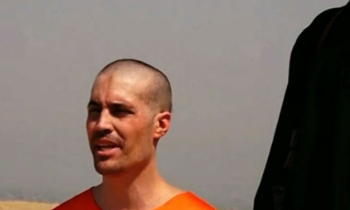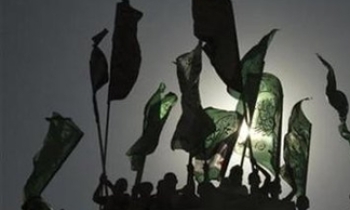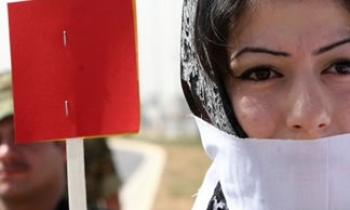A lot has changed for women in the past 100 years. Corsets have gone out of style, glass ceilings have shattered and voting rights are a reality.
But when it comes to sports journalism, women are still lagging behind.
n June, the Institute for Diversity and Ethics in Sports at the University of Central Florida released the results of a diversity study commissioned by the Associated Press Sports Editors (APSE). The results painted a stark portrait of sports desks at more than 300 newspapers around the country, concluding that the vast majority of all sports editors, columnists and reporters are white males.
Specifically, women made up 12.6 percent of all Associated Press member newspaper sports staffs, less than 7 percent of all columnists, and the study found only 16 female editors out of the 320 polled. At the Herald News, one of the newspaper's four reporters and one of four full-time copy editors is female.
While it was more common 30 or 40 years ago to see this sort of gender disparity in certain professions like medicine and law, the days of women shying from traditionally male-dominant careers are long gone. Women now make up nearly 50 percent of all students in medical school. Ditto for law school. And the same goes for women in journalism and communications schools nationwide.
According to a 2004 study, women now outnumber men in enrollments and degrees granted in journalism and mass communications programs nationwide.
For example, Columbia University's Graduate School of Journalism has had classes each year tally about 58 percent female since 1995. The University of Florida's Department of Journalism had 595 females and 222 males enrolled in the fall of 2005, almost a 3-to-1 ratio. Wisconsin's School of Journalism and Mass Communication also has three women for every one man enrolled in the school, as well as UNC-Chapel Hill. While many of those women don't follow the journalism track so much as public relations or other communications fields, the numbers prove that women are certainly a strong presence in the world of journalism.
And yet, while so many women are pursuing journalism as a viable career, that has not translated into the field of sports journalism.
"I'd like to see more women columnists and sports editors, but wouldn't we all?" USA Today columnist Christine Brennan said. "It's not happening yet, but I'm confident that more women will be doing this eventually. It's positive and negative. The positive is that there are more women, but 12 percent is not good enough."
So why the continuing low numbers?
In 1972, federal legislation called Title IX required that schools offer equal opportunity for women, a law that stretched into the world of sports and was vital in creating the female athletes that grace the world stage today. Since that legislation 35 years ago, the number of women participating in sports has risen from one in 27 to one in 2.5. Yet, since Brennan came on the sports-reporting scene in 1981 for the Miami Herald, the number of women reporting on sports has risen from single digits to just 12.6 percent, a much smaller increase.
The reasons for this very slight increase are hard to pinpoint. Marie Hardin, the associate director for research at the Center for Sports Journalism at Penn State University, said she thinks that the reason the percentage is so low is that the retention of female sports journalists is low.
"Many women leave the profession after five years or so. It's not that they aren't coming in (to sports journalism)," Hardin said. "I think work-family issues really are perhaps the biggest factors driving women out of the profession."
Vicki Michaelis, the president of the Association of Women in Sports Media (AWSM), agreed with Hardin's theory.
"One of the really major factors that people kind of nibble around the edges at is the lifestyle factor in sports media," Michaelis said. "This is not a profession that lends itself to (family relationships) very easily. A Penn State study using AWSM numbers found that a lot of women leave the business around age 30."
Hardin also points to editors as a main factor in so few women in the sports journalism world. In research that Hardin conducted in the summer of 2005, she found that 40 percent of sports editors did not think they were ethically obligated to hire women.
"There needs to be a commitment from sports editors that diversity is important," Hardin said. "If they don't see diversity as an ethical issue, you've got a problem right there."
And Hardin has also done research that indicates that most women in sports journalism continue to suffer sexual discrimination on the job, half saying they've been verbally abused. But her study found that this wasn't the reason that women left the profession. It was more because there was little opportunity to advance their careers, and that the work got in the way of their outside lives.
For all the bleak research that Hardin has done, she also finds reasons to hope that women will make gains in sports journalism in the next decades. After all, since the Center for Sports Journalism was established in 2003, about 37 percent of all the applicants into its program have been female.
"There is great potential for women to enter sports journalism at much higher numbers," Hardin said. "Women who are entering sports journalism in college right now, they don't know what Title IX is. They've grown up with all of its benefits."
Brennan also sees a great deal of hope, and she also links the number of women getting involved in the writing of sports to the number of women stepping onto the playing fields as a result of Title IX.
"Maybe women joining sports journalism is a byproduct of Title IX as opposed to a direct result of it," Brennan said. "If girls are playing sports, especially if they're going to grow up and not be able to be professional athletes, they might want to be sports journalists."
Perhaps the numbers aren't so disappointing. After all, when Lesley Visser started working for the Boston Globe in the early 70s, it was a time when medical and law schools had just 3-5 percent of their classes filled with women, and Visser was one of a very few female sports writers.
"We know exactly how far we've come," Visser said. "In 1974 (when I started) it was zero, now it's 12 percent. And that might be farther than we know."
While the University of Central Florida study focused on newspapers, other areas of sports journalism are lagging. Hardin's study found that sports broadcasting has even fewer women involved, and Visser said that she's seen only slow gains made by female sports broadcasters at national networks.
"I can only speak at the network level ... but at the network level (the number of women) has stayed the same since I started," Visser said. "There are precious few jobs to begin with, but it's true and undeniable, (sports broadcasting) is not overly burdened with women."
Female sports broadcasters are certainly a more visible presence than they were in the last decade. Women have made particular gains as sideline reporters, thanks in part to Visser's pioneering work in NFL broadcasts. But there are very few women in the booth.
"Women do see (sideline reporting) as a possibility," Visser said. "It isn't that being in the booth is any better or worse, but women just haven't gone that route."
Brennan was hired out of college in 1981 at the Miami Herald, where she'd interned during the summer between her undergraduate and master's year at Northwestern University. She was the first full-time female sports reporter at the Herald, then made history again as the first woman to cover the Washington Redskins as a writer for the Washington Post. A lifelong sports nut, Brennan didn't give much thought to covering sports as a kid.
"I thought I'd cover politics," Brennan said. "That tells you how strange it was and how uninviting sports journalism was for women, if I was the most sports crazed girl on the planet who loved writing and I didn't think of a career in sports journalism."
Brennan and Visser were among the first female sports reporters out there, and they are thrilled with the increase in women in the field they've seen through the years.
Under the theory that "12 percent isn't good enough," many in the field are working to increase those numbers.
"Like anything else it's going to take time, nothing happens overnight," Brennan said. "Men in sports journalism got a big head start and understandably so, and that's the way it was, that's the truth, the reality of the world. Now women have opportunities they've never had before and they need to keep having them."
Brennan and her colleagues at AWSM are working to keep those opportunities coming for budding female sportswriters.
AWSM was started in 1987 by a small group of women who were working as sports reporters at the time. Members of the organization led the way in helping female sports reporters gain access to locker rooms and clubhouses, and provided an outlet for its members.
"They realized that there were so few of them, they would literally go to the press box and never see another women for many events," Michaelis said. "They would get together every year more as a casual thing, that started the association."
Since that time, the AWSM has developed programs to increase the number of women in the field, sponsoring interns at newspapers all over the United States and providing them with scholarships. AWSM also provides networking opportunities and regional and national gatherings that help members deal with issues they face in the field, as well as develop young talent.
"It really will take such a broad institutional and cultural change for women to be thought of on the same playing field as men when it comes to opportunities in sports," Michaelis said. "Title IX helped quite a bit. It's almost like we need another Title IX or something to push us once again, push us away from the shore and get us farther out to sea. We're stuck there stagnating. While there's not hard numbers from 10 years ago to now, we made some major gains then and we have not made them in recent years."
To make those gains, AWSM is now working with the APSE on new initiatives. In the weeks following the results of the UCF study, the APSE began working with AWSM to create more opportunities for women in the sports journalism field. The APSE has added money to the scholarship program, particularly adding money to the copy-editing internship opportunities. And the APSE and AWSM have started a joint management mentoring program that will link APSE members to aspiring management AWSM members. And finally, the two organizations are linking up to establish a speakers' bureau that would focus on getting girls and women to consider sports journalism as a viable career option.
Hardin thinks that in order for women to make gains in sports journalism, editors need to get creative with scheduling, and they also need to be proactive in recruiting.
But for the most part, most in the field are confident that in time, women will step into sports journalism in greater numbers.
"Women play sports and love sports, and as the old Neanderthals die off, the men who don't think women should do this are now 80 years old, they won't be around that much longer to be making decisions," Brennan said. "That's good in terms of getting the old thinking out of there."
For now, however, the incidence of women writing the sports pages is a mirror of the attention women's sports receive in those same pages: few and far between.
"It's extraordinary, the wonderful change in terms of the number of women in the business," Brennan said. "But I want it to be more."
Reach Sheila G. Miller at 973-569-7069 or millers@northjersey.com.









